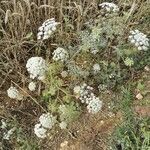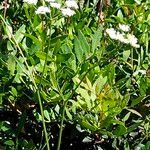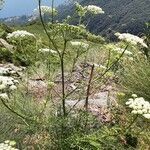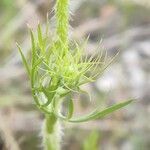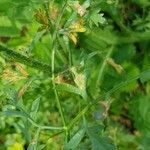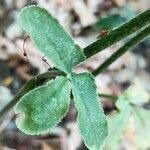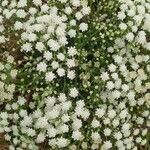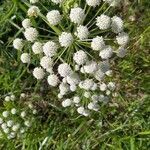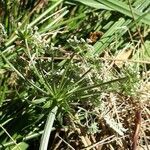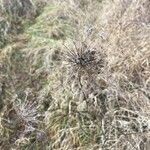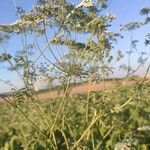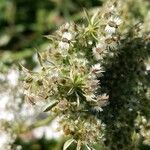Plants annual, 20–100(–150) cm. Basal leaves petiolate, petiole 3–13 cm; blade ternate-3-pinnate; lateral ultimate segments narrowly elliptic, terminal segments obovate-elliptic, 10–15 × 5–20 mm, base cuneate, margin finely setaceous-serrate, apex obtuse or acute, gray-green. Cauline leaves 2-pinnate; ultimate segments ovate or oblong, distally narrowly lanceolate, entire or 3-lobed. Umbels 4–10 cm across; peduncles 8–14 cm; bracts numerous, 3-lobed, pinnate or entire, longer than rays; rays 20–50(–60), 2–8 cm, slender, inner faces hispid, spreading when young, in fruit becoming slightly constricted; bracteoles numerous, linear-acuminate or linear-lanceolate, 2–6 mm, spreading or reflexed; umbellules many-flowered; pedicels 1.5–7 mm, very thin, unequal. Fruit oblong, 1.5–2 × 0.6–1 mm. Carpophore 2-cleft to base. Fl. Jun–Jul, fr. Jul–Aug.
Glabrous, glaucous, erect annual. Stems ± solid, grooved, striate, up to 150 cm high. Basal lvs (1)-2-pinnate, long-petiolate; ultimate segments narrowly elliptic or ovate, coarsely and irregularly serrate, sometimes lobed, 2-10 cm long, sessile or shortly petiolate; stem lvs reduced, (1)-2-3-pinnate, shortly petiolate, with lanceolate to linear or pinnatisect, acuminate segments. Umbels 2-11 cm diam.; rays numerous, fine and incurved at fruiting; bracts numerous, 3-fid or pinnate with filiform to lanceolate segments; bracteoles numerous, linear-lanceolate. Fls numerous, white, 2-3 mm diam. Fr. brown with pale ribs, c. 2 mm long; vittae prominent.
Robust, annual herb, 0.3-1.7 m high, glabrous; taproot slender. Leaves pinnate or bipinnate, with ultimate segments elliptic to broadly obovate, toothed along margins. Flowers in large, compound, showy, many-rayed, terminal umbels; involucre conspicuous, of several trisect to pinnate bracts. Calyx teeth obsolete. Petals white. Flowering time (June-)Nov.-Feb. Fruit narrowly oblong, glabrous, with pale, narrow ribs. Seeds dorsally compressed.
A small annual herb. It is slender and upright. It grows 1.5 m high and spreads 1 m wide. The leaves are light green and are divided 2 or 3 times. They are 15-20 cm long and divided into many finely toothed sword shaped leaflets. The flowers occur in large sprays and are white.
